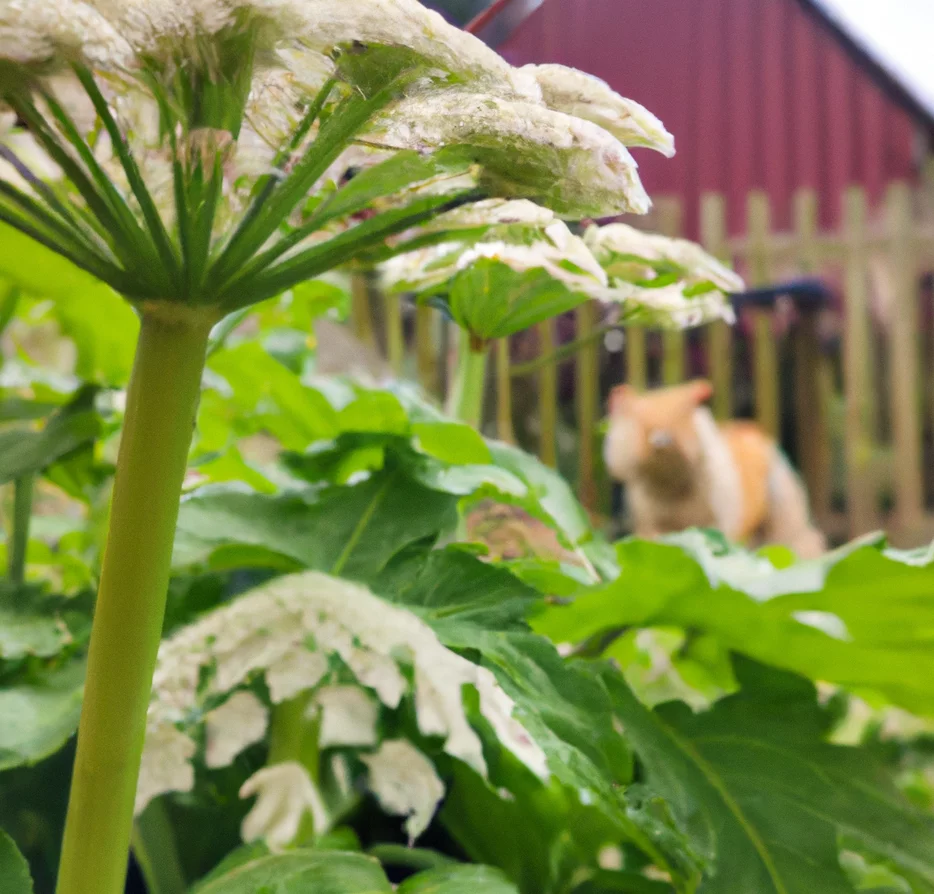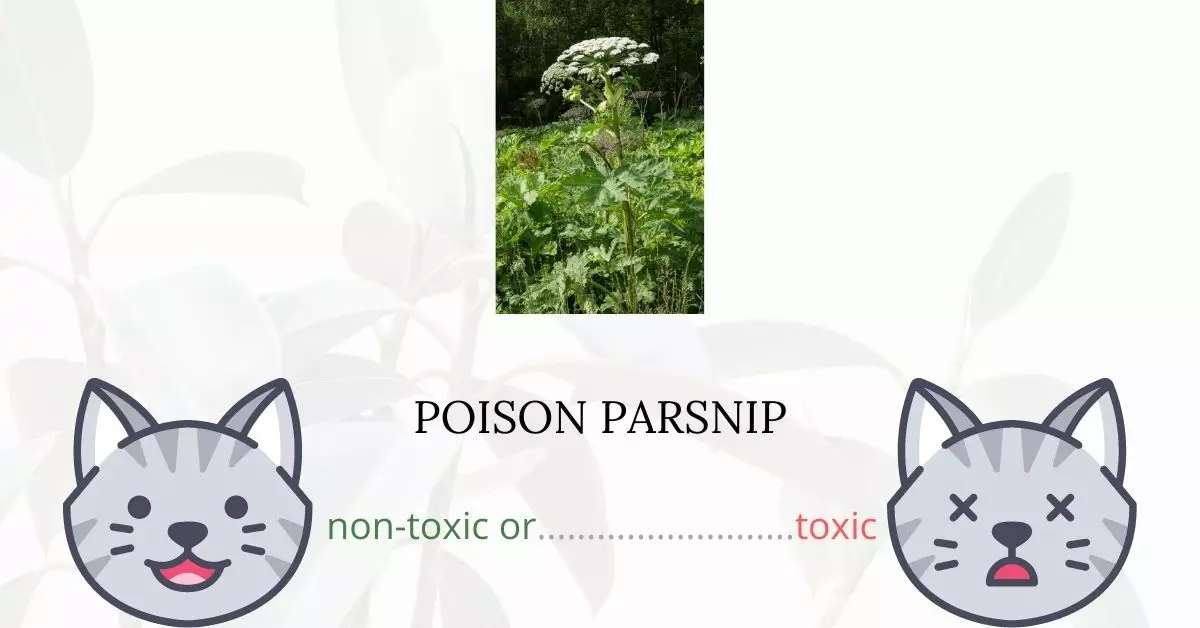Poison Parsnip, alternatively known as water hemlock or cowbane, is indeed toxic to cats, as well as to dogs and horses. The plant harbors cicutoxin, a naturally-occurring poisonous chemical compound that swiftly impacts the central nervous system. This chemical comprises polyene, polyyne, and alcohol functional groups and is a structural isomer of oenanthotoxin, a toxin also found in water dropwort.
This article has been crafted in collaboration with a team of seasoned Doctors of Veterinary Medicine (DVMs), whose valuable inputs have enabled us to present precise and current information concerning the potential hazards of various plants, including Poison Parsnip, and their implications on feline health. Their extensive knowledge and insights ensure the reliability of the content, enriching it with professional understanding and experience. Furthermore, to validate the information and ensure utmost accuracy, we have also conducted thorough research on high-authority websites such as ASPCA and PetMD. Through these meticulous efforts, we aim to provide readers with trustworthy and enlightening details about the toxic effects of Poison Parsnip on cats, aiding them in ensuring the well-being and safety of their pets.
Clinical Signs of Poison Parsnip poisoning in Cats

Exposure to Poison Parsnip, whether through contact, inhalation, or ingestion, can cause a range of clinical signs in cats due to the presence of cicutoxin, a toxic compound. This toxin rapidly acts on the central nervous system, leading to severe and sometimes fatal consequences if left untreated. Below are the clinical signs and explanations for each:
- Diarrhea: This occurs as the body attempts to expel the toxic substance, leading to increased bowel movements and watery stools.
- Seizures: The cicutoxin interferes with the normal electrical activity in the brain, inducing uncontrolled, sudden bursts of electrical activity, leading to seizures.
- Tremors: This is a result of the impact of the toxin on the nervous system, causing involuntary muscle movements.
- Abdominal Pain: The toxin irritates the gastrointestinal tract, causing discomfort and pain in the abdominal region.
- Dilated Pupils: Exposure to the toxin affects the autonomic nervous system, leading to pupil dilation as a reflex to the toxic insult.
- Bloating: The ingestion of Poison Parsnip can cause gas to accumulate in the cat’s digestive system, leading to bloating.
- Fever: The cat’s body may develop a fever as it tries to fight off the toxic components, elevating the body temperature as an immune response.
- Respiratory Depression: Cicutoxin affects the respiratory centers in the brain, potentially leading to slowed or impaired breathing.
- Death: If intervention is not timely, the cumulative effect of these symptoms can lead to the death of the cat.
Symptoms usually manifest within minutes after exposure to Poison Parsnip, progressively worsening over time. Immediate veterinary attention is crucial if any of the above symptoms are observed, to initiate prompt treatment and prevent irreversible damage. Keep your pets away from this plant and consult a veterinarian immediately if you suspect Poison Parsnip exposure.
First Aid and Treatment of Poison Parsnip Poisoning in Cats

Immediately remove your cat from the area, and make sure no other animals are exposed to this area. After your cat has been taken to a veterinarian’s office, treatment must begin right away. The vet will start by inducing vomiting to get rid of any residual plant matter in your cat’s stomach. Your cat will need to be regularly monitored by the veterinarian to ensure that he does not become dehydrated as a result of his vomiting. If your cat becomes dehydrated, he or she will require intravenous fluids to avoid further difficulties. To absorb any toxins that linger in your cat’s stomach, activated charcoal can be used. To flush out the stomach, the vet can do a gastric lavage, which is a stomach wash.
Prior to treatment, it’s possible that your cat will need to be sedated. To prevent your cat from suffering from respiratory depression as a result of the poisoning, the vet may need to implant an oxygen tube down his throat.
Recovery from Poison Parsnip Poisoning in Cats

The cat might die within as little as 15 minutes after consuming the poison parsnip. He will have better chances of making a full recovery if he receives immediate treatment. Cats that haven’t had any seizures yet have a better chance of recovering than those who have had a lot of seizures. The vet may need to continue monitoring the cat if the experienced dehydration or needs a respirator during treatment.
Prevention of Poison Parsnip Poisoning in Cats
Make sure your cat doesn’t get too close to this plant. Remove poison parsnip from your yard with care, and tell others in your neighborhood to do the same. When viable seeds are available, avoid mowing areas with wild parsnip because machinery easily spreads seed to new places. Before switching from an area with wild parsnip to one without, clean your mowing equipment.
If you love plants but have cats at home, check out these lists:





